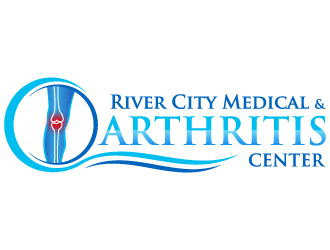Polymyositis/Dermatomyositis



Inflammatory myopathies represent a group of diseases of unknown cause in which muscle injury results from inflammation. Polymyositis and dermatomyositis are the characteristic diseases in this group.
They affect individuals of all ages. The annual incidence of polymyositis and dermatomyositis ranges from 5–10 new cases per million. The average female-to-male ratio exceeds 2:1, with women predominating in this disease that occurs characteristically between ages 15 and 44 years.
The idiopathic inflammatory myopathies are immune-mediated processes, believed to be triggered by environmental factors in genetically susceptible individuals. The specific causes or triggering events remain unknown, but viruses have been strongly implicated.
The criteria for the diagnosis of polymyositis and dermatomyositis include:
For a definite diagnosis of dermatomyositis, three of four criteria plus the rash must be present. For a definite diagnosis of polymyositis, four criteria must be present without the rash.
The dominant clinical features of the idiopathic inflammatory myopathies are symmetrical proximal muscle weakness. The weakness can be accompanied by systemic symptoms of fatigue, morning stiffness and anorexia. Laboratory investigation reveals elevated levels of serum enzymes derived from skeletal muscle, especially creatine phosphokinase (CK). Electromyography (EMG) demonstrates myopathic changes consistent with inflammation and muscle histology shows inflammatory changes. These manifestations can occur in a variety of combinations or patterns, and no single feature is specific or diagnostic.
Polymyositis begins insidiously over three to six months with no identifiable precipitant. The shoulder and pelvic girdle muscles are affected most severely. Weakness of neck muscles, particularly the flexors, occurs in about one-half of all patients. Difficulty swallowing may develop secondary to esophageal dysfunction or obstruction. Myalgias and arthralgias are not uncommon.
The clinical features of dermatomyositis include all those described for polymyositis, plus a variety of cutaneous manifestations. Rashes may precede the onset of muscle weakness by a year or more. Skin involvement varies widely from person to person.
Gottron’s papules – lacy, pink or violaceous areas (raised or macular) found symmetrically on the dorsal aspect of interphalangeal joints, elbows, patella and medial malleoli – are considered pathognomonic. Characteristic changes include heliotrope (violaceous) discoloration of the eyelids, often with associated periorbital edema; macular erythema of the posterior shoulders and neck (shawl sign), anterior neck and upper chest (V-sign), face and forehead; and dystrophic cuticles.
Treatment of inflammatory myopathies is largely empirical. Physical therapy plays an important role. However, bed rest may be required during intervals of severe inflammation. Corticosteroids are the standard first line medication for any inflammatory myopathy. If a patient does not respond to corticosteroids, another agent is added. Clinical improvement may be noted in the first weeks or gradually, over three to six months.
